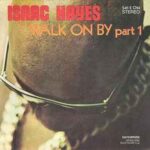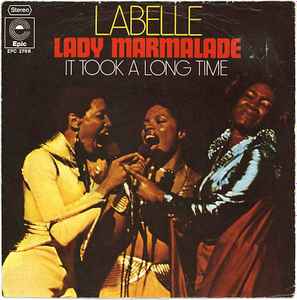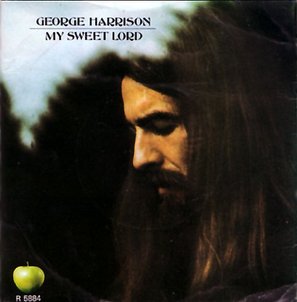 Soul music has always been a genre of storytelling, but few artists have elevated it to the level of cinematic grandeur quite like Isaac Hayes. His 1971 rendition of “Walk On By”, a cover of the 1964 Burt Bacharach and Hal David classic, transforms a simple heartbreak song into a sweeping, orchestral journey. Spanning over twelve minutes in its original album version, Hayes’ interpretation is not merely a cover; it is a reinvention, a deeply immersive experience that highlights his mastery of arrangement, mood, and dramatic tension.
Soul music has always been a genre of storytelling, but few artists have elevated it to the level of cinematic grandeur quite like Isaac Hayes. His 1971 rendition of “Walk On By”, a cover of the 1964 Burt Bacharach and Hal David classic, transforms a simple heartbreak song into a sweeping, orchestral journey. Spanning over twelve minutes in its original album version, Hayes’ interpretation is not merely a cover; it is a reinvention, a deeply immersive experience that highlights his mastery of arrangement, mood, and dramatic tension.
By the time Hayes released this version on the album Hot Buttered Soul, he had already begun carving out a niche as a visionary in soul music. His approach to covers—taking familiar songs and reconstructing them as expansive, textured soundscapes—was revolutionary. Walk On By stands as a testament to his ability to combine intimacy and spectacle, creating music that resonates both emotionally and artistically.
Isaac Hayes: Architect of Soul
Isaac Hayes’ career began in the shadow of Stax Records, where he initially made his mark as a songwriter and arranger. Collaborating with David Porter, Hayes co-wrote classics like Soul Man and Hold On, I’m Comin’ for Sam & Dave, honing his craft as both a composer and lyricist. By the late 1960s, Hayes sought to step into the spotlight as a performer, and his innovative approach to recording redefined what soul music could achieve.
Hayes’ work on Hot Buttered Soul epitomized his vision: extended arrangements, lush orchestration, and a focus on emotional depth. Unlike traditional soul singles, which were typically three minutes long, Hayes’ tracks were expansive explorations. Walk On By became one of the most striking examples of this approach, transforming a concise pop song into a multi-layered epic.
The Original: Burt Bacharach and Hal David
Understanding Hayes’ rendition requires context. The original Walk On By, recorded by Dionne Warwick in 1964, is a concise, polished pop-soul ballad. It is a song of heartbreak and restraint, with Warwick’s vocals conveying the quiet agony of seeing a former lover pass by. The melody, harmonically sophisticated yet straightforward, provided an ideal canvas for reinterpretation.
Hayes retained the core emotional essence of the song—loss, longing, and quiet despair—but amplified it dramatically. His version strips away the original’s brevity, replacing it with layers of orchestration, slow-burning tension, and an almost filmic progression. In doing so, Hayes reshaped the listener’s experience from a moment of empathy to a full emotional journey.
Reimagining the Song: Arrangement and Composition
The most immediately striking element of Hayes’ Walk On By is its arrangement. Opening with a deep, resonant string section, the track gradually introduces horns, keyboards, and rhythm elements, creating a sense of anticipation and drama. The arrangement is deliberate and cinematic, with each musical element arriving like a carefully timed visual cue in a film.
Hayes’ baritone voice dominates the track, conveying both strength and vulnerability. His phrasing stretches syllables and words, emphasizing the emotional weight of each line. Lines such as “Walk on by, walk on by” become hypnotic refrains, repeated with increasing intensity as the arrangement swells around him.
The song’s instrumentation reflects Hayes’ mastery of texture. Strings provide tension, brass adds punctuated emotion, and the rhythm section subtly drives the momentum without overpowering the arrangement. Electric piano and organ tones lend a gospel-tinged warmth, connecting the cinematic orchestration with the emotional roots of soul music.
Emotional and Narrative Depth
Hayes’ rendition transforms Walk On By from a pop song into an emotional odyssey. While the original expresses heartbreak succinctly, Hayes’ interpretation immerses the listener in the psychological landscape of lost love. The extended duration allows for reflection and emotional absorption, with moments of tension, release, and introspection.
The song’s dynamics mirror the stages of emotional response: the opening strings suggest hesitation and sorrow, the slow crescendo conveys mounting despair, and Hayes’ commanding vocal delivery articulates the profound weight of rejection. By the midpoint, the orchestration reaches a cinematic intensity, enveloping the listener in a wave of emotion that is almost palpable.
Hayes’ genius lies in balancing grandiosity with intimacy. Despite the elaborate arrangement, the song never loses its emotional core. Every instrumental flourish serves the narrative, ensuring that the listener remains connected to the human experience at the heart of the track.
The Role of Extended Form
One of Hayes’ most revolutionary contributions to soul music was his embrace of extended song forms. By elongating Walk On By, he allows the music to breathe, explore, and transform. The twelve-minute runtime, far longer than the three-minute standard for pop singles, was unconventional but highly effective.
This extended form provides space for improvisation, instrumental interplay, and gradual emotional development. Hayes’ baritone delivery is given room to evolve, moving from quiet reflection to powerful declaration. Instrumental sections—string passages, horn interludes, and keyboard embellishments—function as narrative devices, punctuating emotional beats much like a film score.
The extended form also challenged conventional listening expectations, encouraging audiences to engage deeply with the music. Hayes demonstrated that soul could be not only immediate and visceral but also expansive and contemplative, capable of sustaining attention and evoking complex emotions over a prolonged period.
Production and Studio Innovation
Produced by Hayes himself at Stax Records, the track exemplifies meticulous studio craftsmanship. The production emphasizes clarity, balance, and spatial depth, allowing each instrument to occupy a distinct sonic space. Strings and horns are layered to create richness without clutter, while the rhythm section maintains a subtle propulsion that grounds the composition.
Hayes’ vocal placement within the mix further enhances the dramatic effect. His voice is both intimate and commanding, drawing the listener in while asserting dominance over the sonic landscape. This balance between proximity and grandeur is a hallmark of Hayes’ production style, one that elevates Walk On By beyond typical soul recordings of its time.
Reception and Influence
Upon release, Hayes’ Walk On By received critical acclaim for its innovation, musicianship, and emotional depth. While the track was not initially a commercial single hit, it became a defining moment in his career and an enduring example of how a cover can transcend its source material.
Musicians and producers across genres have cited Hayes’ version as influential. Hip-hop artists have sampled its orchestration and vocal phrasing, jazz musicians have studied its harmonic complexity, and soul performers have drawn inspiration from its emotional honesty. Hayes’ interpretation demonstrates that reinterpretation can be transformative, offering new meaning and resonance even to familiar material.
The track’s influence extends beyond music. Its cinematic approach, extended form, and emotional breadth have inspired filmmakers, choreographers, and visual artists, underscoring the interdisciplinary power of Hayes’ artistry.
Cultural Legacy
Decades after its release, Walk On By remains a touchstone of soul music and a testament to Isaac Hayes’ visionary approach. It is frequently included in “greatest soul songs” lists and has become a cultural reference point for extended, cinematic recordings in popular music. Its combination of storytelling, emotional depth, and musical sophistication ensures that it continues to resonate with new generations of listeners.
The song’s legacy is also tied to its broader impact on soul and R&B. By demonstrating that pop songs could be reinvented as expansive, orchestral experiences, Hayes paved the way for future artists to experiment with song length, arrangement, and narrative complexity. His work on Walk On By foreshadowed the development of neo-soul and modern R&B, where extended arrangements and emotional storytelling have become central to the genre.
Musical Analysis: Harmony, Melody, and Mood
From a technical perspective, Hayes’ arrangement is a masterclass in harmonic and melodic reinterpretation. He retains the original chord progression but enriches it with lush voicings, chromatic inflections, and dynamic shifts. The harmonic tension between major and minor modes enhances the song’s sense of longing, while carefully placed suspensions and resolutions keep the listener emotionally engaged.
Melodically, Hayes emphasizes phrasing and ornamentation. His vocal lines are elongated, with subtle slides and inflections that add nuance and drama. Instrumental melodies—particularly the string and horn motifs—interweave with the vocal line, creating counterpoint and reinforcing the song’s narrative.
Mood is equally important. The track moves through stages of introspection, yearning, and intensity, guided by dynamics, tempo variations, and orchestral texture. The listener is taken on an emotional journey, from quiet contemplation to cathartic release, mirroring the arc of heartbreak and longing conveyed in the lyrics.
Live Performances
Isaac Hayes’ live performances of Walk On By further amplified its impact. On stage, the track could extend even beyond its album length, incorporating improvisational instrumental passages, audience interaction, and expanded orchestration. Hayes’ presence—towering, commanding, and charismatic—made the song a focal point of his concerts, drawing the audience into its emotional and cinematic world.
Live renditions often highlighted Hayes’ improvisational skills, particularly in vocal phrasing and instrumental solos. The band’s tightness, combined with the freedom of extended performance, created a sense of immediacy and spontaneity that elevated the track beyond its studio recording.
Conclusion: A Soul Epic
Walk On By by Isaac Hayes is more than a cover; it is a reimagining, a cinematic journey through heartbreak, longing, and human emotion. Its expansive arrangement, orchestral richness, and dramatic vocal delivery transform a concise pop song into a monumental work of art. Hayes’ ability to blend intimacy with grandeur, technical mastery with emotional depth, ensures that this track remains an enduring masterpiece of soul music.
Over fifty years since its release, Walk On By continues to captivate, influence, and inspire. It is a testament to Isaac Hayes’ vision, demonstrating that music can be both deeply personal and universally resonant. The song’s cinematic approach, emotional storytelling, and musical sophistication make it a benchmark for artists across genres, a reminder that soul music is not only felt but experienced as an immersive journey.
For anyone seeking to understand the transformative power of interpretation, the artistry of extended composition, or the emotional depth of soul, Isaac Hayes’ Walk On By remains an essential, unforgettable ride.


